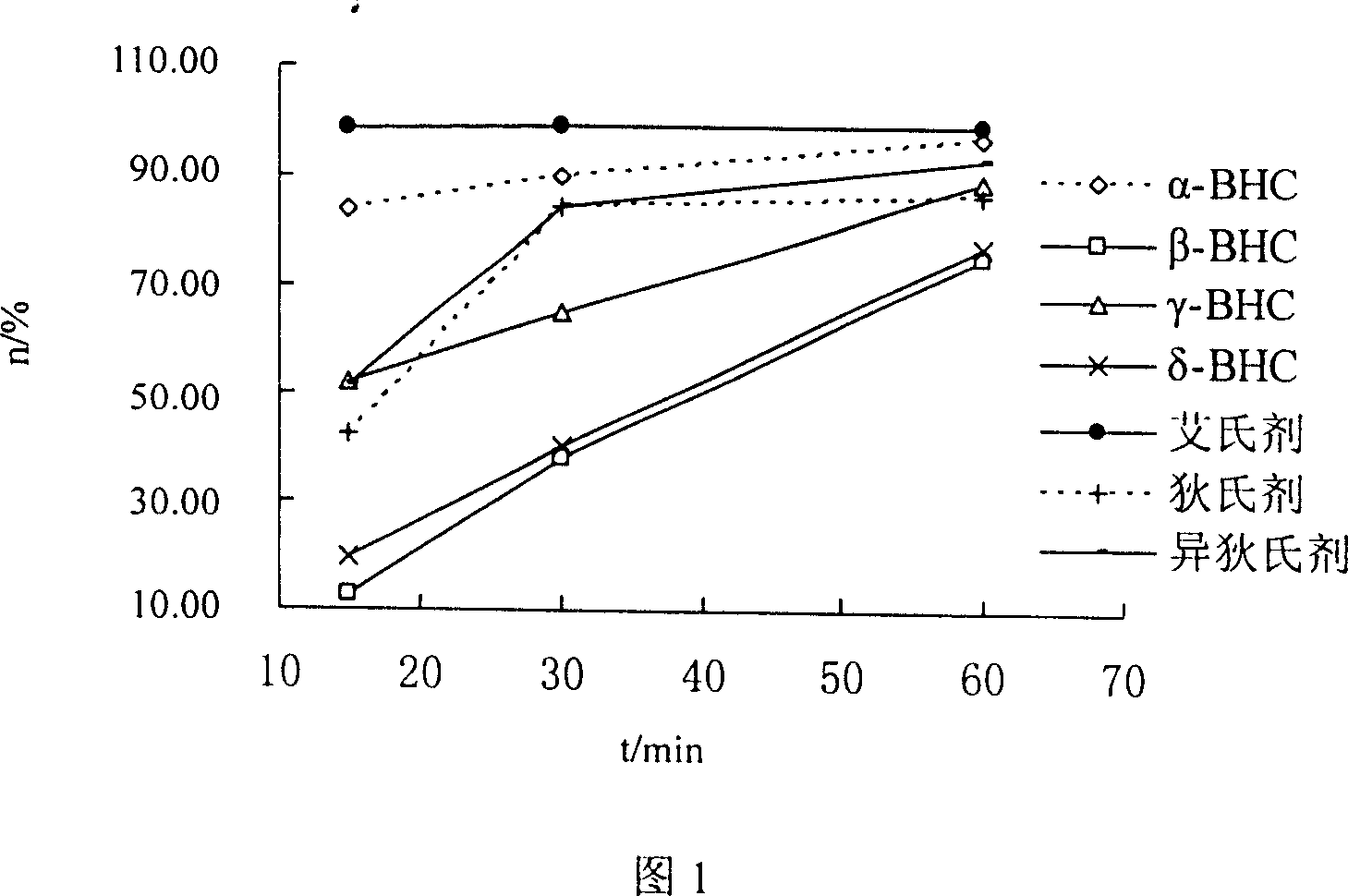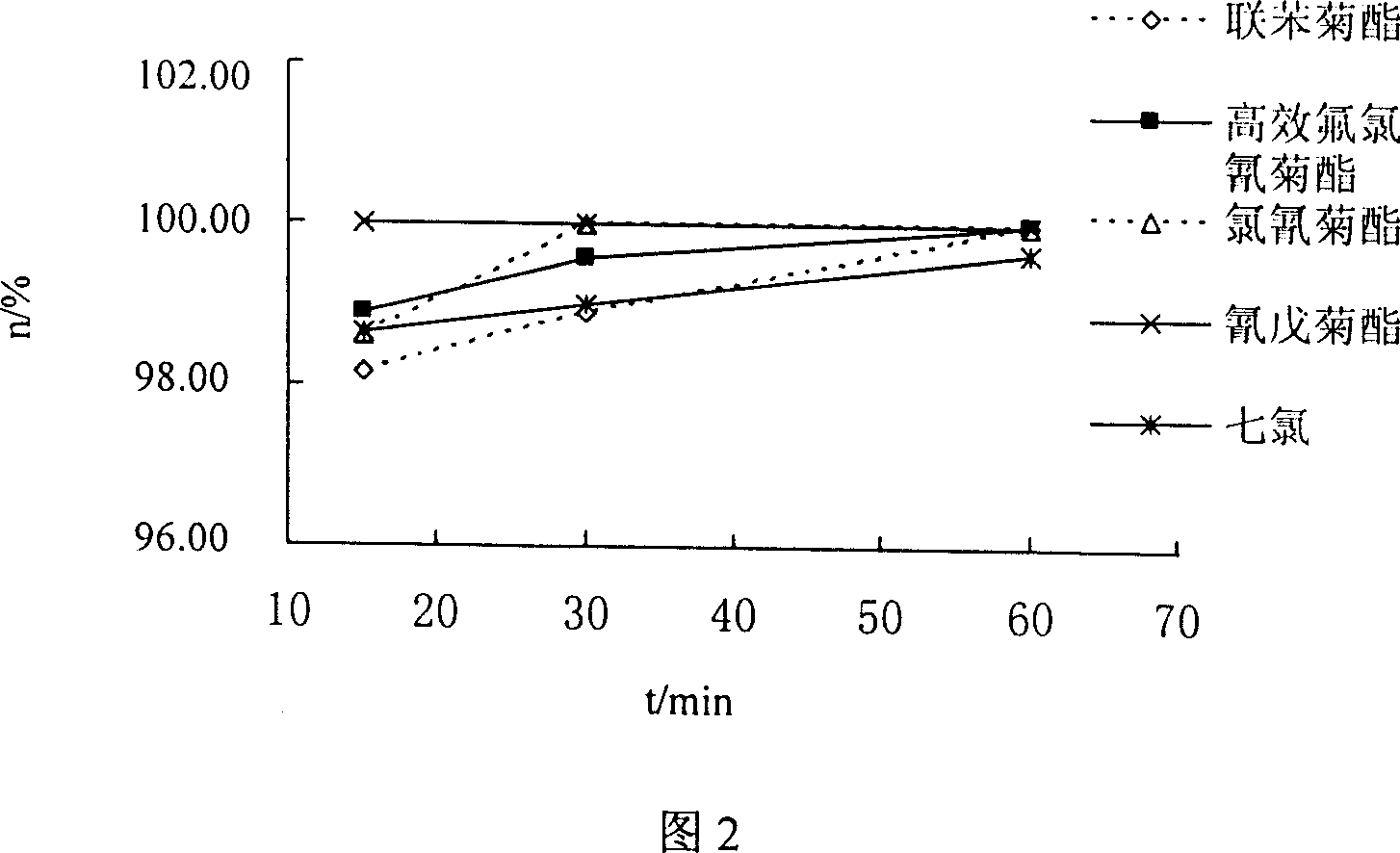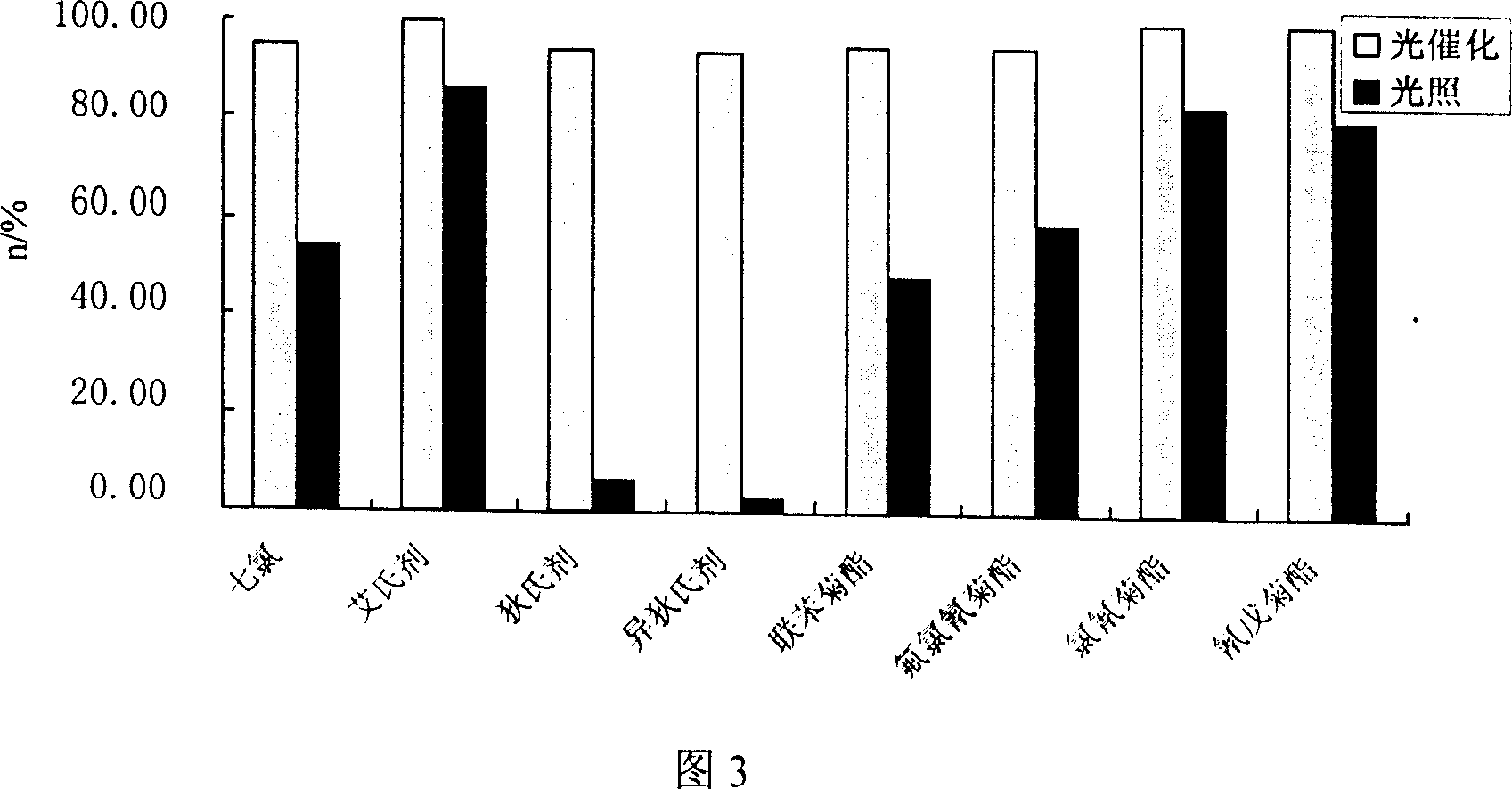Method for organochlorine pesticide photocatalytic degradation on nano titania
A nano-titanium dioxide and organochlorine technology, applied in the fields of botanical equipment and methods, animal repellents, biocides, etc., can solve the problems of high cost and long time, and achieve the effect of low cost, short time and environmental friendliness
- Summary
- Abstract
- Description
- Claims
- Application Information
AI Technical Summary
Problems solved by technology
Method used
Image
Examples
Embodiment 1
[0018] Injection of organochlorine pesticides into powdered nano-TiO with a diameter of 35 nm 2 In distilled water, the concentration of organochlorine pesticides in the solution is 100ppb, nano-TiO 2 The concentration is 0.50mg / mL, and the air flow rate is 100mL / min. After the solution is ultrasonically mixed, it is vigorously stirred on a magnetic stirrer, and irradiated with a UV lamp for photocatalytic degradation for 30 minutes. The UV source is a 30W UV germicidal lamp. , the radiation wavelength is 254nm, and the ultraviolet lamp is placed 9-10cm above the solution. The reacted solution was passed through a 0.45 μm syringe filter to remove powdered TiO 2 , extracting the filtered solution with n-hexane, discarding the water phase, and detecting and analyzing the degraded product of the obtained organic phase through GC-ECD, the degradation yield of most of the organochlorine pesticides on the surface can reach more than 90% after reaction, Other refractory ones, such ...
Embodiment 2
[0020] α-BHC, β-BHC, γ-BHC, δ-BHC, aldrin, dieldrin, endrin, bifenthrin, beta-cyfluthrin, cypermethrin, fenvalerate and heptachlor etc. 12 Organochlorine pesticides and permethrin containing chlorine, among which the concentration of beta-cyfluthrin is 400ppb, and the others are 100ppb, TiO 2 The dosage is 0.50mg / mL, the diameter is 50nm, the air flow rate is 90mL / min, and the photodegradation time is selected as 15, 30, and 60min respectively for photocatalytic degradation. The reacted solution was passed through a 0.45 μm syringe filter to remove powdered TiO 2 , the filtered solution was extracted with n-hexane, the aqueous phase was discarded, and the resulting organic phase was detected by GC-ECD to analyze the degraded products. Taking α-BHC (α-666) as an example, after analysis and calculation, the degradation rates at 15, 30, and 60 minutes were 83.67%, 90.17%, and 97.19%, respectively, and the degradation rates for dieldrin were 41.87%, 84.14%, 86.47%; and for refra...
Embodiment 3
[0022]With the above-mentioned 12 kinds of organochlorine pesticides and the permethrin containing chlorine element, wherein the concentration of beta-cyfluthrin is 160ppb, and the others are 40ppb, and the air flow is 120mL / min, and light (without nano TiO 2 ) and photocatalytic degradation (TiO 2 The dosage is 0.25mg / mL), and the degradation time is 30min. The solution after direct irradiation was extracted with n-hexane. The solution after the photocatalytic degradation reaction was passed through a 0.45 μm syringe filter to remove powdered TiO 2 , the filtered solution was extracted with n-hexane, the aqueous phase was discarded, and the resulting organic phase was detected by GC-ECD to analyze the degraded products. Dieldrin and endrin are the most obvious, and their degradation rates under light conditions are 6.57% and 2.90%, respectively, while the degradation rates in photocatalytic degradation can reach 94.08% and 93.57%, so it shows that TiO 2 The participating p...
PUM
 Login to View More
Login to View More Abstract
Description
Claims
Application Information
 Login to View More
Login to View More - R&D Engineer
- R&D Manager
- IP Professional
- Industry Leading Data Capabilities
- Powerful AI technology
- Patent DNA Extraction
Browse by: Latest US Patents, China's latest patents, Technical Efficacy Thesaurus, Application Domain, Technology Topic, Popular Technical Reports.
© 2024 PatSnap. All rights reserved.Legal|Privacy policy|Modern Slavery Act Transparency Statement|Sitemap|About US| Contact US: help@patsnap.com










